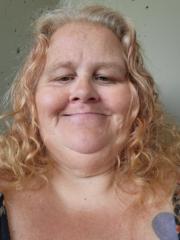Aug 2 • Give Advice
Do You have rocks in your Head?
WHAT is Calcification?
Calcification is the buildup of calcium salts in body tissues where calcium doesn’t belong.
- In healthy cases, calcification helps form bones and teeth.
- In unhealthy cases, it contributes to arterial plaque, kidney stones, joint pain, and even pineal gland dysfunction.
It's essentially your body putting calcium in the wrong place at the wrong time.
WHO Does It Affect Most?
Calcification can affect anyone, but it’s more common in -
- Adults over 40 (especially postmenopausal women and men with cardiovascular risk)
- People with vitamin K2 deficiency
- Those with chronic inflammation or oxidative stress
- Anyone with kidney issues, hormonal imbalance, or poor metabolic health
- People exposed to fluoride, aluminum, or heavy metals (linked to pineal calcification)
WHERE Does Calcification Happen?
Common sites include -
- Pineal gland → linked to disrupted melatonin and circadian rhythm
- Arteries (vascular calcification) → leading to heart disease and stroke
- Kidneys → forming kidney stones
- Joints → arthritis and stiffness
- Breast tissue → seen on mammograms, may be benign or cancer-associated
- Lungs, tendons, soft tissue → due to injury, inflammation, or age
WHY Does It Happen?
The body may deposit calcium abnormally when -
- There’s damage or inflammation – the body sends calcium to "patch" the site
- Calcium regulation is poor – due to low vitamin K2, magnesium deficiency, or hormonal imbalances
- Fluoride exposure – accumulates in the pineal gland and may trigger calcium salt buildup
- High calcium supplements or D without K2 – taking D3 alone can shunt calcium into tissues instead of bones. Consult with a qualified Health Professional knowledgeable in Nutrition & supplementation.
- Aging and oxidation – free radicals damage tissues, attracting misplaced calcium
WHEN Does It Begin?
- Slowly, silently, and over time.
- Most people begin experiencing some degree of soft tissue calcification after age 35–40, especially if sleep, diet, and detox pathways are not optimized.
- Pineal gland calcification, in particular, has been seen even in children and teens exposed to fluoride, poor sleep, and blue light at night.
HOW Does It Happen or progress?
- Cellular damage (inflammation, trauma, infection) signals repair
- Calcium is deposited as part of the healing response
- Without vitamin K2 and magnesium, calcium isn't directed to the bones
- Over time, calcium hardens in soft tissues → becomes visible on X-rays or scans
- In the pineal gland, calcium binds with fluoride + phosphate to form hydroxyapatite crystals, making the gland less functional
What Can You Do To Prevent or Reverse It?
- Get enough Vitamin K2 (MK-7) – directs calcium to bones, away from arteries and tissues
- Avoid excessive calcium supplements – especially without balancing D3 and K2
- Support magnesium levels – essential for calcium balance
- Reduce fluoride exposure – filter water, avoid fluoride-based toothpaste
- Detox gently – sweating, binders, and antioxidant support
- Get sunlight daily – supports natural melatonin and detox from the pineal
- Sleep in total darkness – encourages pineal detox and melatonin production
- Consult with a qualified Health Professional knowledgeable in Nutrition & supplementation.
FitnHealthy Forever Takeaway -
Calcification isn’t just a problem of “getting old.”
It’s often a nutrient-deficiency-driven, inflammation-fueled, light-disrupted issue that starts much earlier than you think.
And when it affects the pineal gland, it can disrupt your sleep, hormone balance, and fat loss… making it harder to be FitnHealthy Forever.
9
7 comments

skool.com/fitnhealthy-forever
Learn how we help Women 40+ - Lose 20 Lbs or more in 90 days or less without giving up Your favorite foods or wine and Keep It Off Forever!
Powered by





